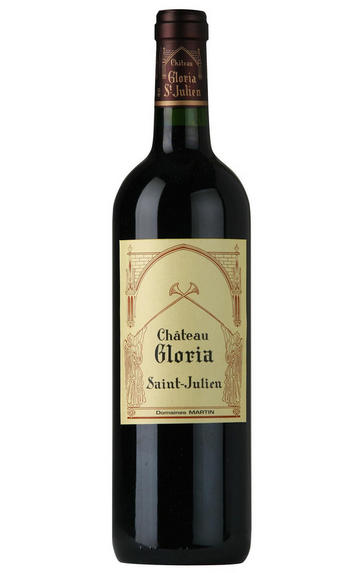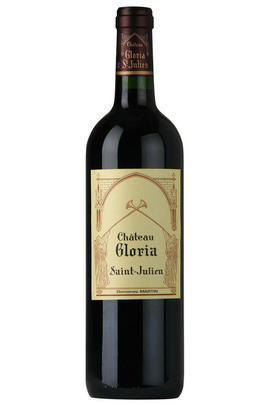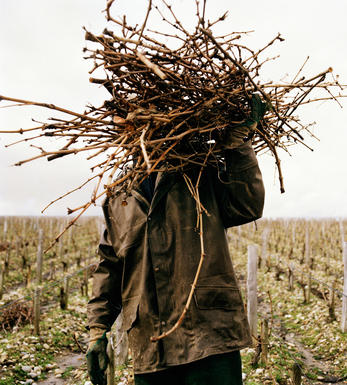
2015 Château Gloria, St Julien, Bordeaux

Critics reviews
The 2015 Gloria is another Saint-Julien that has improved over the last 12 months. It has a bolder and more exuberant bouquet than some of its peers, featuring lush blackberry and blueberry fruit and revealing a touch of iodine and crushed violet with aeration. The medium-bodied palate displays supple tannin, a fine bead of acidity and very pure fruit intensity (black cherries, bilberry and boysenberry), although it clams shut toward the finish. Slightly more modern in style than its peers, this should still age with style. Tasted blind at the Southwold 2015 Bordeaux tasting.
Neal Martin, vinous.com (Jul 2019)
The 2015 Gloria is even better than it was from barrel. Dark, voluptuous and intense, the 2015 hits all the right notes. Black cherry, plum, spice, gravel, tobacco and cedar give the wine much of its complexity and nuance. Gloria is one of the very finest values readers will come across in Bordeaux. Tasted two times.
Drink 2020 - 2040
Antonio Galloni, vinous.com (Feb 2018)
The 2015 Gloria, a blend of 60% Cabernet Sauvignon, 27% Merlot, 7% Petit Verdot and 6% Cabernet Franc, matured for 14 months in 40% new and 60% one-year-old barrels. Deep garnet-purple in color, it has an earthy/meaty nose with a core of black plums and blackberries plus touches of eucalypt and anise. The medium-bodied palate is just a little lean and chewy with an earthy finish.
Drink 2019 - 2033
Lisa Perrotti-Brown, Wine Advocate (Feb 2018)
Tasted blind. Lustrous dark garnet. Sweet ink on the nose. Easy to like but not the most classical. Rather confected or put together. Messy finish but certainly expresses the vintage. GV?
Drink 2024 - 2040
Jancis Robinson, jancisrobinson.com (Jan 2019)
What a gorgeous and supple young wine with ultra-fine tannins and vivid acidity. Medium to full body and direct and driven tannins. Shows such beauty. Better in 2020 but already beautiful.
James Suckling, jamessuckling.com (Feb 2018)
About this WINE

Chateau Gloria
Château Gloria is an unclassified St-Julien property that produces clarets that equal in quality those from the more prestigious classed growths. Henri Martin, a cooper by upbringing, took over the property in 1942 and began purchasing plots of vineyards from classed growth properties such as Gruaud-Larose, Talbot, Lagrange and Léoville-Barton. By the mid 1960s he had 50 hectares spread across the appellation. In 1982 he purchased Château St-Pierre and thus realised his lifetime ambition of owning a Grand Cru Classé property.
Henri Martin died in 1991 and Gloria is now run by his son-in-law Jean-Louis Triaud. The wine is a blend of 65% Cabernet Sauvignon, 25% Merlot, 5% Cabernet Franc and 5% Petit Verdot. It is aged in a combination of large oak foudres and small oak barrels (50% new).
Gloria produces a wine that is typically deep in colour and rich, cassis-laden and cedary on the palate. It normally needs 7-10 years of bottle age to show at its best.

St Julien
St Julien is the smallest of the "Big Four" Médoc communes. Although, without any First Growths, St Julien is recognised to be the most consistent of the main communes, with several châteaux turning out impressive wines year after year.
St Julien itself is much more of a village than Pauillac and almost all of the notable properties lie to its south. Its most northerly château is Ch. Léoville Las Cases (whose vineyards actually adjoin those of Latour in Pauillac) but, further south, suitable vineyard land gives way to arable farming and livestock until the Margaux appellation is reached.
The soil is gravelly and finer than that of Pauillac, and without the iron content which gives Pauillac its stature. The homogeneous soils in the vineyards (which extend over a relatively small area of just over 700 hectares) give the commune a unified character.
The wines can be assessed as much by texture as flavour, and there is a sleek, wholesome character to the best. Elegance, harmony and perfect balance and weight, with hints of cassis and cedar, are what epitomise classic St Julien wines. At their very best they combine Margaux’s elegance and refinement with Pauillac’s power and substance.
Ch. Léoville Las Cases produces arguably the most sought-after St Julien, and in any reassessment of the 1855 Classification it would almost certainly warrant being elevated to First Growth status.
Recommended Châteaux: Ch. Léoville Las Cases, Ch.Léoville Barton, Ch Léoville Poyferré, Ch. Ducru-Beaucaillou, Ch Langoa Barton, Ch Gruaud Larose, Ch. Branaire-Ducru, Ch. Beychevelle

Cabernet Sauvignon Blend
Cabernet Sauvignon lends itself particularly well in blends with Merlot. This is actually the archetypal Bordeaux blend, though in different proportions in the sub-regions and sometimes topped up with Cabernet Franc, Malbec, and Petit Verdot.
In the Médoc and Graves the percentage of Cabernet Sauvignon in the blend can range from 95% (Mouton-Rothschild) to as low as 40%. It is particularly suited to the dry, warm, free- draining, gravel-rich soils and is responsible for the redolent cassis characteristics as well as the depth of colour, tannic structure and pronounced acidity of Médoc wines. However 100% Cabernet Sauvignon wines can be slightly hollow-tasting in the middle palate and Merlot with its generous, fleshy fruit flavours acts as a perfect foil by filling in this cavity.
In St-Emilion and Pomerol, the blends are Merlot dominated as Cabernet Sauvignon can struggle to ripen there - when it is included, it adds structure and body to the wine. Sassicaia is the most famous Bordeaux blend in Italy and has spawned many imitations, whereby the blend is now firmly established in the New World and particularly in California and Australia.


Buying options
Add to wishlist
Description
The 2015 Gloria is another Saint-Julien that has improved over the last 12 months. It has a bolder and more exuberant bouquet than some of its peers, featuring lush blackberry and blueberry fruit and revealing a touch of iodine and crushed violet with aeration. The medium-bodied palate displays supple tannin, a fine bead of acidity and very pure fruit intensity (black cherries, bilberry and boysenberry), although it clams shut toward the finish. Slightly more modern in style than its peers, this should still age with style. Tasted blind at the Southwold 2015 Bordeaux tasting.
Neal Martin, vinous.com (Jul 2019)
wine at a glance
Delivery and quality guarantee